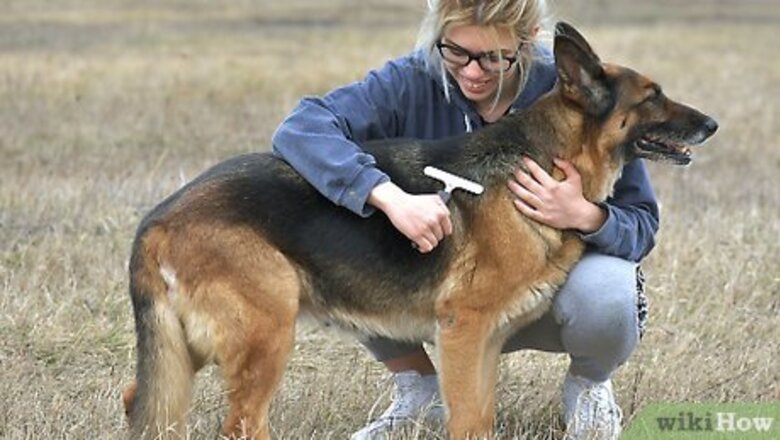
views
Brushing Frequency and Tools
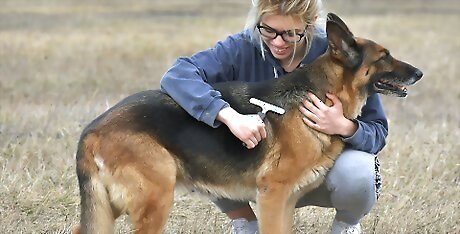
Plan to brush your GSD every 1-3 days for most of the year. As with any other double-coated breed, it’s vital to groom a GSD’s fluffy undercoat regularly. Otherwise, the undercoat will quickly develop numerous knots, tangles, and mats. Give your GSD a full coat brushing twice per week at minimum. If your GSD is very active, or if it has a particularly thick coat, you’ll likely want to brush it every day.
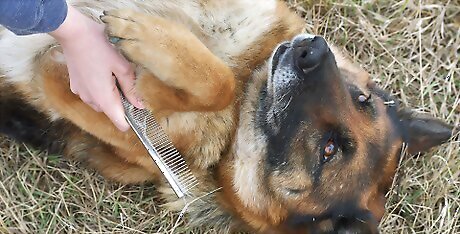
Brush your pup 1+ times daily when it’s “blowing coat” twice a year. GSDs shed their entire undercoat 2 times per year, usually in spring and fall. Often called “blowing coat,” this process results in a barely-believable amount of shedding. Prepare to groom your dog’s fur at least once, and possibly twice, per day during these periods. If you don’t groom very regularly during this time, your GSD will shed big clumps of undercoat all over the place. Even worse, the undercoat may get severely tangled and matted.
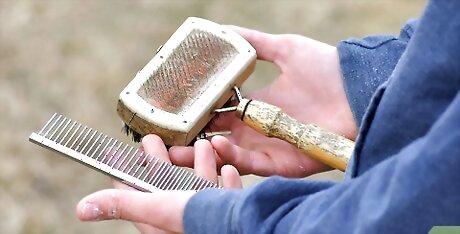
Pick up a slicker brush and metal grooming comb as your first tools. The classic slicker brush is about as simple as it gets: a handle, a rectangular head, and lots of short metal pins. A metal grooming comb is equally basic: sturdy metal teeth that are close together at one end and further apart at the other. You can move on to fancier grooming options as needed, but try these first—they may be all you need! Slicker brushes and grooming combs are available at any pet supply retailer.

Try a grooming rake and other alternatives if you need brushing help. There’s no shortage of advice on the best grooming tool for GSDs, and plenty of brush options. There are, for example, numerous types of “de-shedding brushes” available for sale, as well as variations on the “grooming rake”—which, as the name indicates, looks a lot like a miniature rake. Some GSD groomers prefer a slicker brush, some prefer a grooming rake, and some use both. If you’re interested in buying a de-shedding brush, read online reviews and ask any groomers and/or GSD owners you know for recommendations. Expect to go through some trial-and-error before you find the best brush (or brush combo) for your GSD.
Brushing Environment and Technique
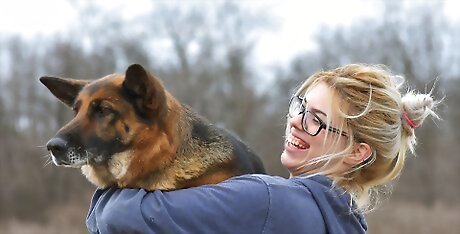
Start brushing your dog from an early age. If possible, start getting your puppy used to the brush and comb when it’s about 8 weeks old. At first, the puppy may think you are playing and try to snap at the brush. Prevent this by having someone distract the dog with a squeaky toy while you brush it. During the grooming process, praise your puppy for staying calm and not trying to bite the brush or comb.
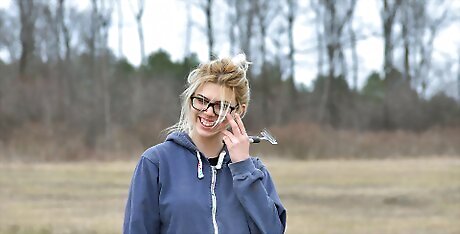
Choose 1-2 quiet grooming spots, with 1 preferably outdoors. Dogs tend to get anxious, restless, or both during grooming. Using quiet and familiar grooming spots will help calm them during the process. If conditions permit you to groom outdoors, do so, especially when a GSD is “blowing coat,” due to the immense volume of undercoat you’ll brush out. Make sure your indoor grooming spot is easy to clean. A garage, basement, or bathroom might be a good spot. Especially if you brush indoors, invest in a good vacuum cleaner that’s highly rated for sucking up pet hair. You’ll need it!
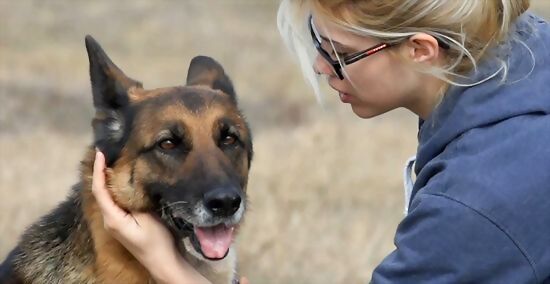
Start when your GSD is calm, and keep it calm throughout. Try brushing your GSD 15-30 minutes after a long walk or play session, when it’s no longer hyper but not yet sleepy. Use soothing, positive language throughout the grooming process to help maintain its calm—things like “Good job, boy” and “It’s okay, we’re almost done.” It may help to schedule the grooming sessions at a consistent time—for instance, shortly after your early-evening walk together. With some practice, you’ll probably be able to fully brush your GSD in about 15 minutes.
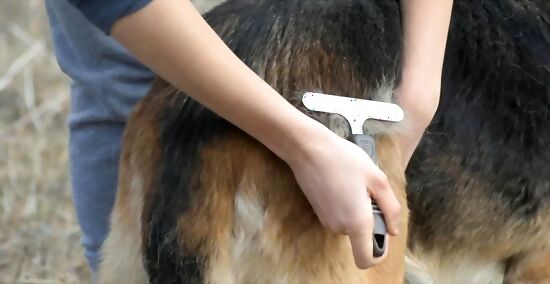
Begin brushing in a small patch near their tail. You may find that another starting point works better for your GSD, and that’s fine. What’s more important is to start at the same place every time, and follow the same grooming routine throughout. That way, your dog is more likely to remain calm. Say a few calming words and give some gentle pats or strokes before you begin. You might want to show your dog the brush, but never let a dog play with grooming tools—be clear that they aren’t toys.
Brush the GSD’s double coat with the grain, using quick, steady strokes. Lift up the coarser outer coat with your free hand, then run the brush through the undercoat 3-4 times, going from roots to tips in the direction of hair growth. Then, let go of the outer coat and brush through it a few times. If you encounter a tangle or mat, don’t try to force the brush through it. Work around it for now, then address is separately before moving on.
Work out tangles and mats carefully with your tools and detangler spray. A metal grooming comb works well here, but you may prefer a slicker brush or other tool. In any case, spray a little detangler spray directly on your chosen tool, then gently work it through the tangle or mat. If you simply cannot work through the tangle or mat, snip it out carefully with grooming shears. Holding the comb vertically and working it down through the tangle or mat may help. Cut the undercoat only when necessary to get rid of a tangle or mat, and cut as little as is necessary to remove the tangle or mat.
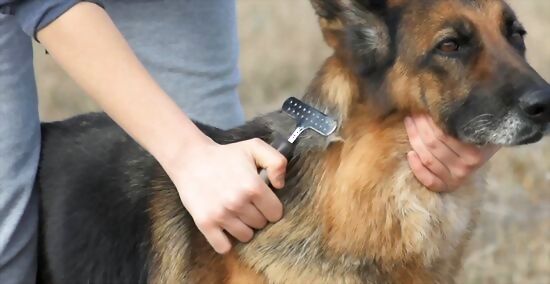
Continue brushing section-by-section, moving forward then downward. Use the brushing plan that works best for your pup, but consider the following procedure: back and sides, working forward from the tail; neck and head; legs and feet; tail; belly; sanitary area (around the genitals and anus). Generally speaking, you should save more sensitive areas for last. Take short breaks as needed, especially if your dog gets agitated or restless. Use calming language and soothing gestures until your GSD is ready to resume.
Eye, Ear, Mouth, Nail, and Hair Care
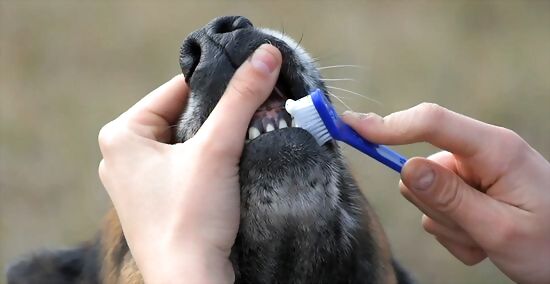
Brush your GSD’s teeth every day. Choose a dog toothbrush and a dog toothpaste in a flavor your GSD enjoys. Allow your dog to lick some of the tasty toothpaste off of the brush, then brush its teeth in small circles. Lift the dog’s lips to access the rear teeth. Human toothpaste might make your GSD sick, so use only doggie toothpaste. Ask your vet about offering your GSD dental treats. Don’t use these as a substitute for regular brushing, however.
Clean your GSD’s ears weekly if necessary. If your GSD has very waxy or itchy ears, it might benefit from regular ear cleanings. Squeeze a few drops of canine ear cleaning drops into each ear, as per the product instructions. Massage the base of each ear for several seconds, then wrap a soft cloth around your finger. Gently swirl it around in the dog’s ear, but don’t stick your finger deep into the ear. If you notice a foul odor or excessive buildup deep in the ears, contact your vet. Not all dogs need their ears cleaned regularly. If your GSD’s ears don’t itch or generate lots of wax, there’s no need to clean them. In fact, unnecessarily introducing fluids into the ears during cleaning could increase the risk of an ear infection.
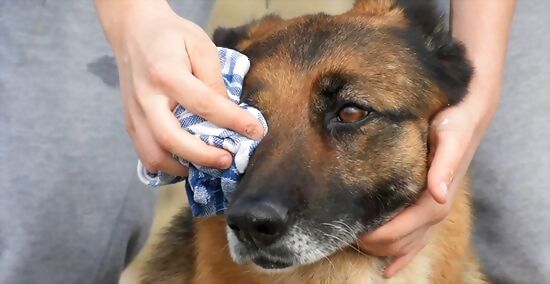
Inspect your GSD’s eyes and clean around them once per week. Look for any swelling, redness, or excessive discharge—if you notice any of these, contact your vet. Clean any minor discharge near the inside corners of the eyes by gently wiping with a dampened cloth. GSDs generally don’t have much “tear staining” due to eye discharge. Contact your vet if the discharge or staining seems excessive.
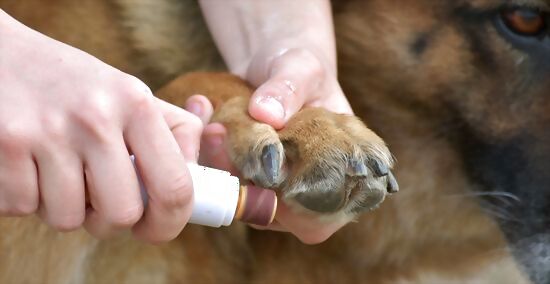
Check your GSD’s nails weekly and clip them as needed. Trim the nails only if they’ve become long enough to scrape up the flooring or your skin. Use either a guillotine-style clipper or a nail grinder, depending on your preference. In any case, remove very small amounts at a time so you don’t cut into the “quick”—a sensitive blood vessel found in each nail. If you do nick the quick, use styptic powder or a styptic stick to stop the bleeding.
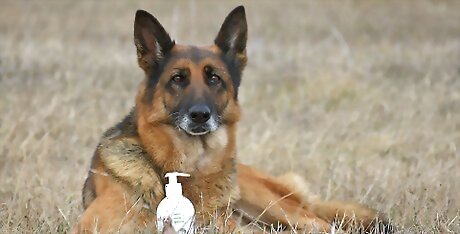
Bathe your dog 2-12 times per year. Bathing frequency depends on your GSD’s activity level and the thickness of its coat. Fill a bathtub or outdoor “kiddie pool” with about 6 in (15 cm) of warm water. Massage the water gently into your dog’s coat, massage in a gentle dog shampoo, then rinse it away completely with clean water. Don’t use shampoo on the dog’s face. Just wipe it with a clean, damp cloth. Dry your GSD with warm towels as soon as the bath is done. Don’t rub vigorously, though, or you’ll create tangles. Bathing a GSD more frequently than is needed will strip away the natural oils that protect its coat.
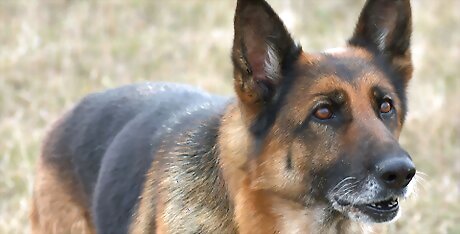
Get your pup a haircut only if absolutely necessary. If your GSD remains properly groomed, it should never need a haircut. The GSD’s 2 coats naturally shed and regenerate as necessary. A haircut should only be considered if the undercoat has severe and widespread mats or tangles, or if the dog must undergo surgery or another medical treatment that requires bare skin. Let a professional groomer cut your GSD’s hair if this is necessary. Shaving a GSD’s full coat down to the skin may “mess up” the regrowth of its double coat for several years, or even permanently.















Comments
0 comment